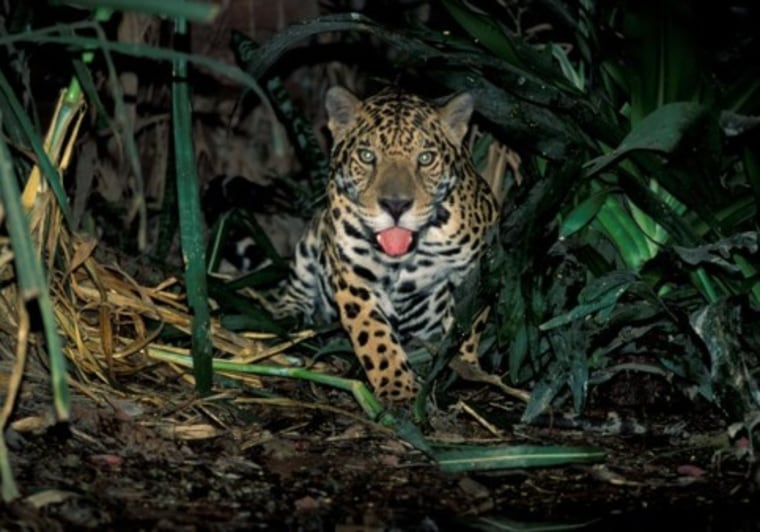Despite mankind's mastery of planet Earth, there are still an awful lot of creatures out there willing to kill (and even eat) you if given half a chance. There's also an ever-increasing number of adrenaline junkies bent on getting as close to these creatures as possible — and living to tell about it.
"Most African safari guides say that buffalo are the most dangerous animals, because they are easily startled, and their first instinct is to charge," says Matt Kareus of Colorado-based Natural Habitat Adventures, which organizes wildlife safaris all around the globe. "Most also say, though, that nothing is more lethal than getting between a hippo and its water at night. And many of our Alaska guides say moose are more dangerous than bears. A lot depends on circumstance and the likelihood of an encounter in the first place."
The fear factor often depends on personal experience. For Australian wildlife guide Mark Christensen, the saltwater crocodile is the creature to avoid at all costs. He has never been attacked himself, but Christensen has spent long enough in the Outback to amass a sizable collection of croc attack stories, like the 1987 death of American model Ginger Meadows, who was taken by a croc in the remote Kimberley region during a casual swim near her yacht. The skipper saw the croc approaching her and screamed, but it was too late. "She suddenly went underwater for 30 seconds," Christensen relates. "She came back up, was dragged back underwater, and that's the last they saw of her alive."
For Tanzanian guide George Mavroudis, the animal most likely to send shivers up his spine is the African lion. During a private family safari, his girlfriend awoke one morning about 30 yards outside of their camp. She didn't remember moving during the night, but there were lion tracks all around and teeth marks in the bottom of her sleeping bag. "Her father deduced that a lion had come in the night," Mavroudis remembers, "dug its teeth into the foot of the bag and started dragging it off." At some point in time the lion must have decided that it was just too much work and given up. "Lucky for her she never woke up while the lion was pulling her. She would have been dead."
Despite poaching and habitat destruction, violent contact between humans and many large predators seems to be on the upswing, rather than vice versa. Bear and cougar attacks have increased in North America; tiger assaults are mounting in parts of Asia, as people move into their territory and the animals find themselves boxed into corners rather than able to flee.
"Most of the attacks occur between 5 p.m. and 7 p.m. in thick undergrowth," says British conservationist Debbie Martyr, who leads a tiger conservation unit in Sumatra and investigates dozens of encounters between humans and big cats each year. "Villagers know there's a tiger in the area, but they still go out to cut grass for their water buffalo or go down to the stream to wash. The tiger sees something moving and pounces, then realizes it's made a mistake — people are not its natural prey. But by then it's too late."
Still, a lot of the fear is unfounded. Nobody really paid that much attention to great white sharks until the 1970s, when writer Peter Benchley penned a little ditty called "Jaws" that Steven Spielberg later transformed into a movie that kept millions of people out of the water for years. The number of shark-inflicted deaths each year is actually quite small. According to the International Shark Attack File compiled by the Florida Museum of Natural History, there have about 470 confirmed fatal shark attacks since the year 1580 — an average of just over one per year. Yet sharks remain the object of our nightmares — and our vacation dreams.
At the same time, fictional films and books remind us that animals can — and often do — turn on humans. As the unfortunate Timothy Treadwell demonstrated in the mesmerizing Werner Herzog film "Grizzly Man," bears can go from cuddly to predatory in the blink of an eye.
Why is it that people crave such close contact with deadly creatures?
"What we're seeing is a larger trend of people craving close encounters with nature and animals in general," says Kareus. "A growing awareness that as we've become more urbanized and our lives have gotten busier and busier, we've lost something important and that something is a primal connection to nature. This is why ecotourism is by far the fastest-growing segment of the travel industry." He attributes the amount of people craving close encounters with dangerous animals a corollary to this basic need. "Some people are natural thrill-seekers, so rather than merely seeing a bear from a bus, they want to look it in they eye. What is more primal than that?"
Potentially deadly animals can sometimes dwell close to home. But more often these days you have to venture into the wilderness, and in some cases to the ends of the Earth, far from the world's most deadly species — homo sapiens.
